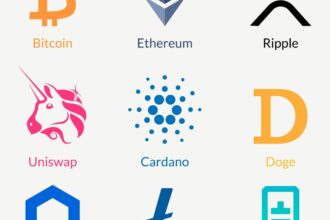Decentralised Social Media: Its Impact on Communication
Touted as the new form of internet, Web 3.0 is positively impacting the way we communicate online. Through its Web 3.0 social networks and social media platforms on the blockchain, we are experiencing the benefits of decentralised messaging and a more transparent version of the internet. But what exactly does this type of peer-to-peer communication in Web 3.0 entail for us communicators and social media natives?
Read below to discover just how decentralised social media is revolutionising online communication on a global scale.
Peer-to-peer communication in Web 3.0 allows users ownership and transparency
Peer-to-peer communication refers to a model where each user or device in a network can share and receive resources without the need for a third-party server. The peer-to-peer communication model in Web 3.0 brings the advantage of users having ownership and control of their data as opposed to a single company. With concerns about big companies owning private data and using it unethically, decentralised social media offers more secure platforms on the blockchain. These Web 3.0 social networks allow users to own their data fully, and ensure trust and transparency in each interaction.
Web 3.0 communication is the perfect avenue for content creation and monetisation in the users’ own terms
Another advantage of Web 3.0 communication is it opens the floodgates for many aspiring content creators or brands to share their content to their target audience. Through cryptocurrencies and NFTs, users can showcase art, music, games, and more with the intent and capability to monetise. They can sell, trade, and earn online all on their own while enjoying secure transactions via the blockchain’s immutable ledger as well as automated solutions such as smart contracts.
Brands can use Web 3.0 communication as a new way to reach their audience
Web 3.0 social networks can also be used by brands to communicate through different means. Instead of traditional marketing initiatives where everything is purely transactional and impersonal, companies can communicate by building rapport among its users, organising online communities, and rewarding them for community participation. This can be done by launching campaigns that incentivise user engagements, such as loyalty programs, tokens, limited edition collectibles, and more. Through such efforts, you can engage and build communities made up of like-minded users from all around the world.
Communication in Web 3.0 fights against censorship
A social media platform on the blockchain is much more open and censorship-resistant compared to traditional social media platforms. Where social media sites on Web 2.0 are quite strict in terms of what content is allowed, Web 3.0 social networks break that chain – this then allows creatives to go beyond their limits with the content they share, opening up opportunities for unique content to be created.
Of course, these benefits come with challenges. For one, a lack of regulation and censorship can spell disaster if not managed properly. That’s why as Web 3.0 continues to grow, its users must come together to collaborate and self-regulate so they can be safer as they browse a more decentralised form of the internet.
With these advantages, there’s no doubt that Web 3.0 social networks are the way to go for a more open, decentralised, and censorship-resistant means of online communication. To learn more about decentralised social media and messaging and how your brand can benefit from them, contact us at No Standing to get started!











